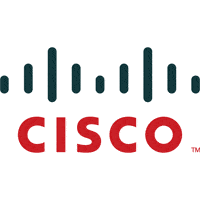At Cisco, we see that almost every organization is prioritizing digitization. Studies reveal that these projects don’t always lead to success with several causes, IT teams are facing budget reductions; in addition budgets are static, most of the budget is spent keeping the lights on; and lastly, IT teams have to do more and more tasks with less personnel, then there are several important disruptors all companies have to cope with, mobility, cloud, IoT and security.

In terms of mobility, a lot has changed over the past few years. Not only do we now need different network settings to support all devices but private applications now consume bandwidth on corporate networks. Looking at the Internet of Things studies predict that in 2020 there will be an additional 50 billion IoT devices on the network. Traditional networks as we know them today aren’t capable to host this many devices. At Cisco we believe security is part of the network and not just bolted on, we have created a solid end-to-end security strategy. Our customers have to deal with more and more threats and be compliant to several regulations including the GDPR. In the meantime networks have become more complicated than ever, the network’s grew and have become more complex and time-consuming to manage.
So what does this mean for the IT teams? IT teams face the following challenges, defending the organization from attacks; simplification of network management operations; delivering the best experience possible.
Using North Medicare as an example, a large hospital that wants to make their patients stay as comfortable as possible. For example by providing free internet and audio and video capabilities, the network has a thousand users per day and is managed by 10 staff members, the network team is facing cost reductions while wanting to improve the user experience which now is a 3.2, a thousand users were three mobile devices on average means three thousand connections to manage.
Studies reveal that we see an increase of 20 per cent year-on-year, while the number of employees remains the same. Configuration and troubleshooting are very time-consuming, on average 95% of all network configuration is done manually, while an IT team spends about 43 per cent of their time on troubleshooting network related issues! 43 per cent on 10 FTE’s equates to 4.3 hours of troubleshooting per day alone, as the costs for North Medicare have to go down, manual tasks have to be eliminated as much as possible, and as the organization wants to improve their customer experience they need to provide the users with a stable, reliable, secure Network that always works.
There are 4 steps to get to the ideal solution shows How Cisco DNA Works
Step 1, Automation, introduce DNA Center to the network using the four key features: design, policy, provision and assurance.
Step 2, Create an SDA fabric. a fabric works as a single entity and eliminates concepts like maintaining an IP address pool, VLANs and access lists. This will make the network a lot easier to manage because you don’t have to manage VLAN and IP addresses anymore.
Step 3, Apply assurance to get a deeper insight into the network monitor the user experience and analyze application performance. using machine learning, we can make sure the network is going to tell us what is about to go wrong even before the users notice it.
Step 4, Use ISE to segment the network into smaller pieces and even micro-segments. this will add extra security layers into the network. Techniques such as encrypted traffic analytics can help detect malware into encrypted traffic without decrypting, making the network more secure.
After completing these four steps you will see that time spent on troubleshooting will decrease by 80% and time spent on changing configurations will decrease by 67%. Resulting in lower OPEX costs on average by 61%, and by applying Cisco security solutions, we are able to detect breaches in minutes instead of days and segmentation improves the overall network security.
All this will give the users a great experience on the network, so you can expect the user experience to go up from a 3.2 to a solid 4.4 or higher and that is priceless. want to learn more about the benefits for your company? Visit cisco.com/go/DNA.

